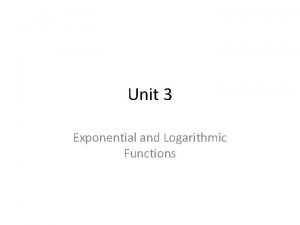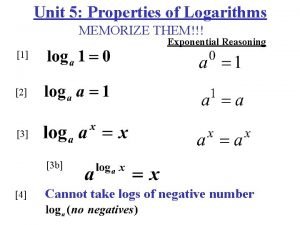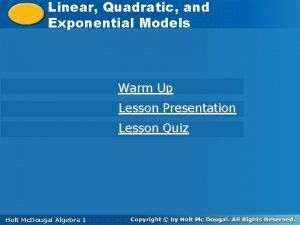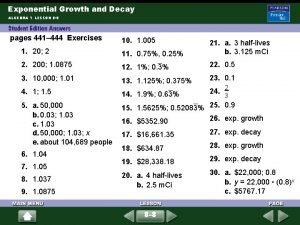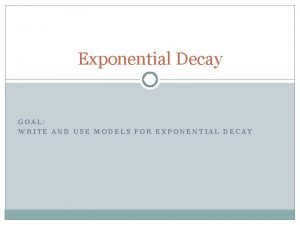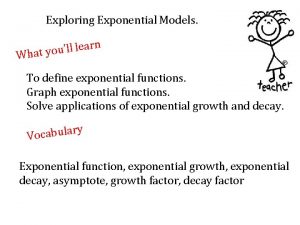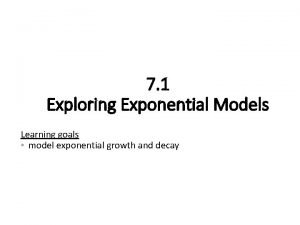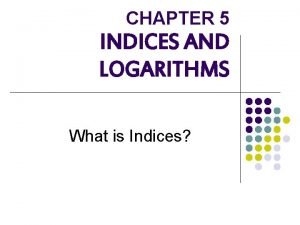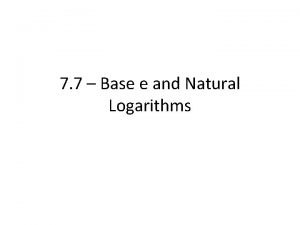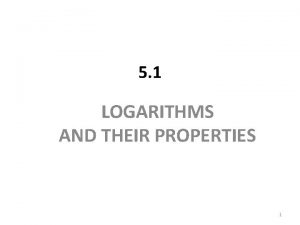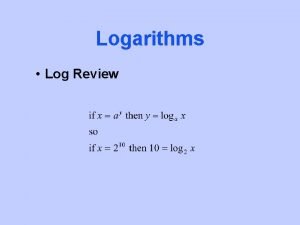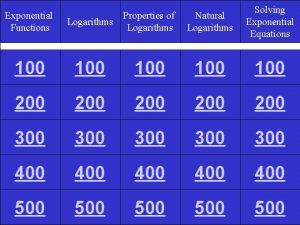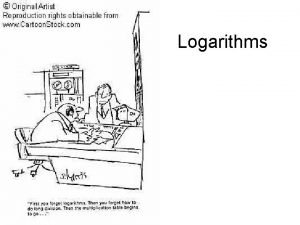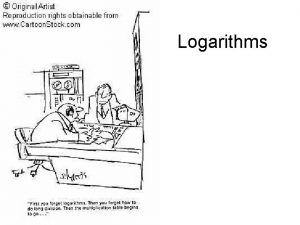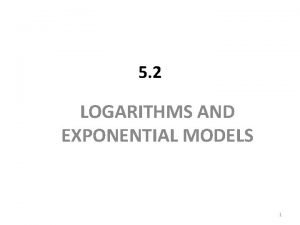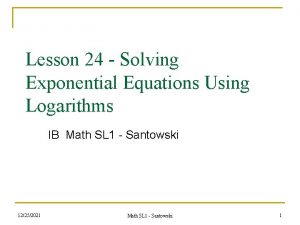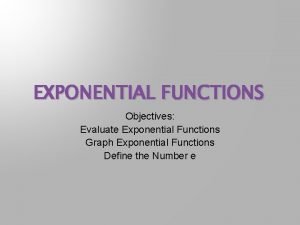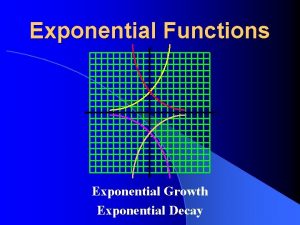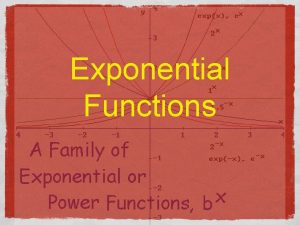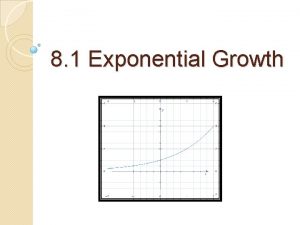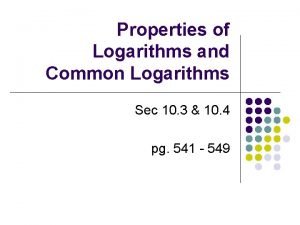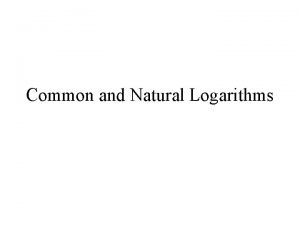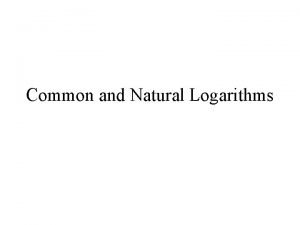Logarithms and Exponential Models Lesson 4 2 Using

















- Slides: 17

Logarithms and Exponential Models Lesson 4. 2

Using Logarithms • Recall our lack of ability to solve exponential equations algebraically • We cannot manipulate both sides of the This lesson gives equation in the normal fashion us tools to be able § add to or subtract from both to sides manipulate the § multiply or divide both sides equations algebraically

Using the Log Function for Solutions • Consider solving § Previously used algebraic techniques (add to, multiply both sides) not helpful • Consider taking the log of both sides and using properties of logarithms

Try It Out • Consider solution of 1. 7(2. 1) 3 x = 2(4. 5)x • Steps § Take log of both sides § Change exponents inside log to coefficients outside § Isolate instances of the variable § Solve for variable

Doubling Time • In 1992 the Internet linked 1. 3 million host computers. In 2001 it linked 147 million. § Write a formula for N = A e k*t where k is the continuous growth rate • We seek the value of k § Use this formula to determine how long it takes for the number of computers linked to double 2*A = A*e k*t • We seek the value of t

Converting Between Forms • Change to the form Q = A*Bt • We know B = ek • Change to the form Q = A*ek*t • We know k = ln B (Why? )

Assignment • Lesson 4. 2 • Page 164 • Exercises A § 1 – 41 odd

Continuous Growth Rates • May be a better mathematical model for some situations • Bacteria growth • Decrease of medicine in the bloodstream • Population growth of a large group

Example • A population grows from its initial level of 22, 000 people and grows at a continuous growth rate of 7. 1% per year. • What is the formula P(t), the population in year t? § P(t) = 22000*e. 071 t • By what percent does the population increase each year (What is the yearly growth rate)? § Use b = ek

Example • In 1991 the remains of a man was found in melting snow in the Alps of Northern Italy. An examination of the tissue sample revealed that 46% of the C 14 present in his body remained. § The half life of C 14 is 5728 years § How long ago did the man die? • Use Q = A * ekt where A = 100% § Find the value for k, then solve for t

Unsolved Exponential Problems • Suppose you want to know when two graphs meet • Unsolvable by using logarithms § Instead use graphing capability of calculator

Did You Know?

Did You Know?

Did You Know?

Did You Know?


Assignment • Lesson 4. 2 • Page 164 • Exercises B § 43 – 57 odd
 Exponential function transformations
Exponential function transformations Lesson 3 using economic models
Lesson 3 using economic models Logarithm rules
Logarithm rules Curve fitting with exponential and logarithmic models
Curve fitting with exponential and logarithmic models Linear vs quadratic vs exponential
Linear vs quadratic vs exponential Semi modals
Semi modals Exponential growth and decay algebra 1
Exponential growth and decay algebra 1 Exponential decay models
Exponential decay models 7-1 exploring exponential models form g
7-1 exploring exponential models form g 7-1 exploring exponential models
7-1 exploring exponential models Exploring exponential models practice
Exploring exponential models practice Mamdm
Mamdm Using recursion in models and decision making sheet 3
Using recursion in models and decision making sheet 3 Derivative of inverse function
Derivative of inverse function Log and indices
Log and indices Exponential equation solver
Exponential equation solver Log form to exponential form
Log form to exponential form Site:slidetodoc.com
Site:slidetodoc.com
